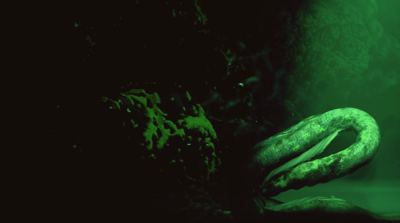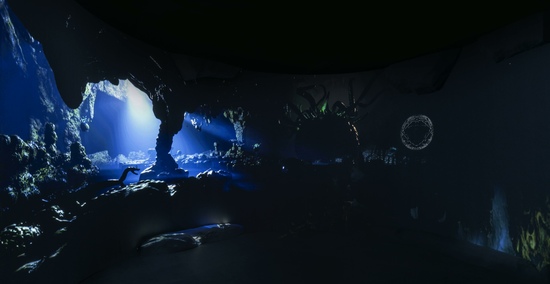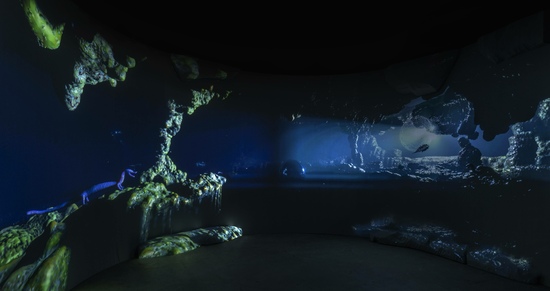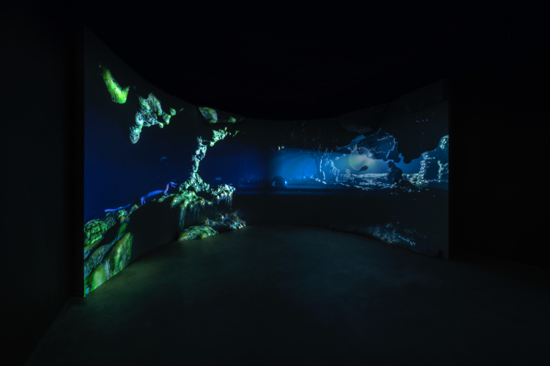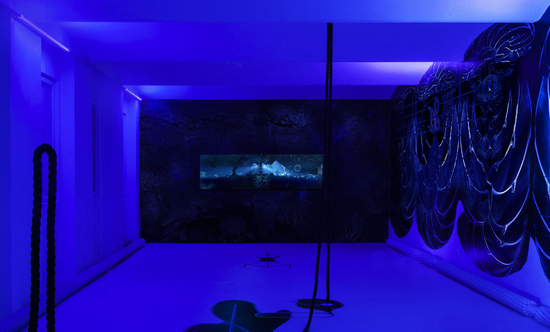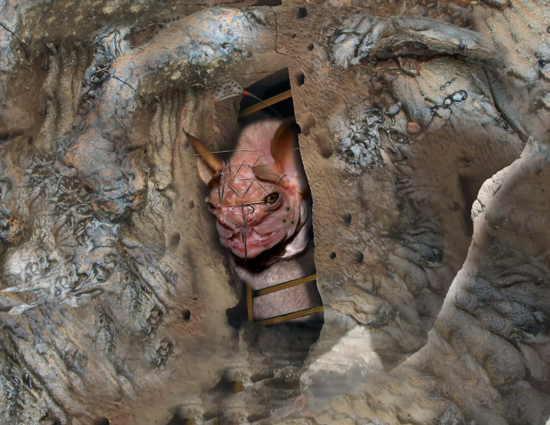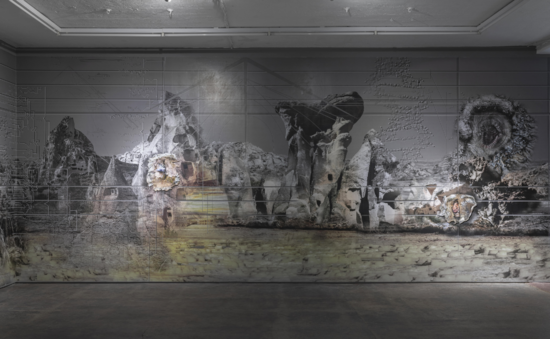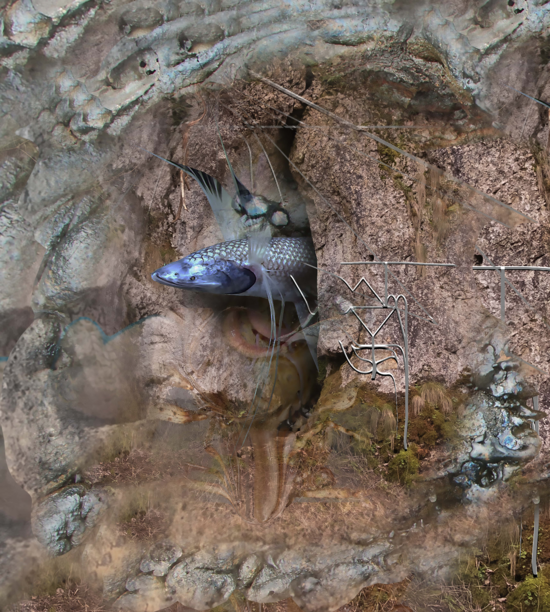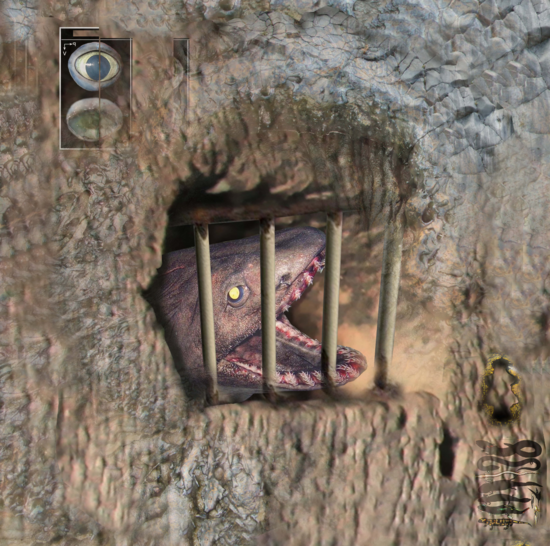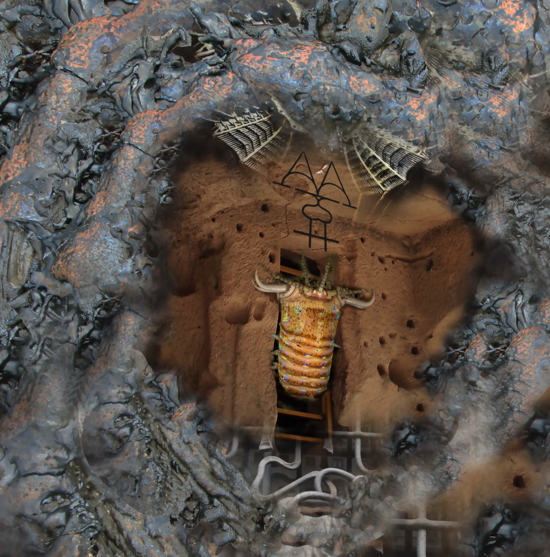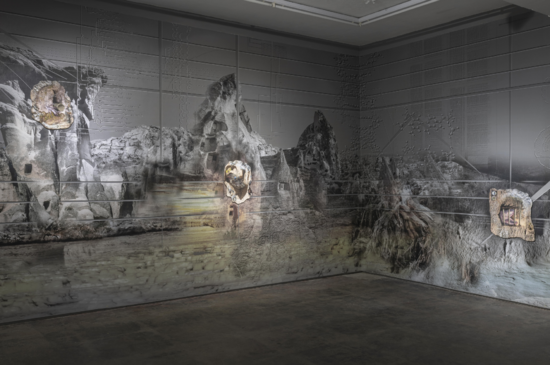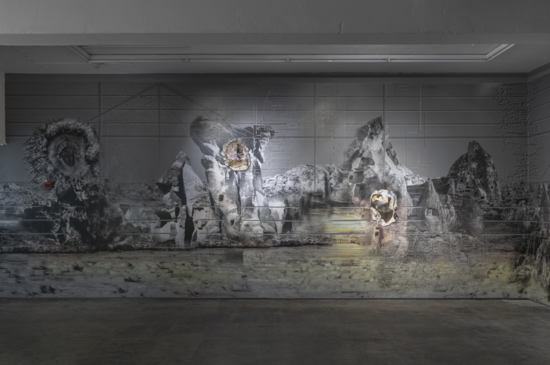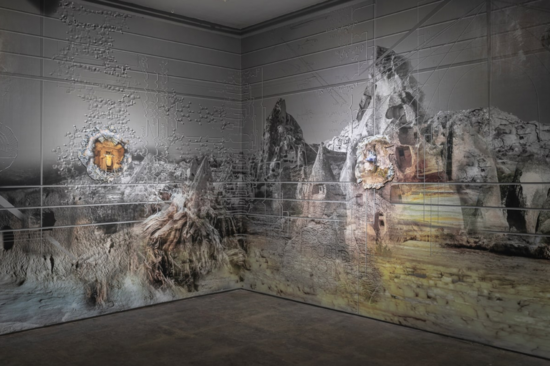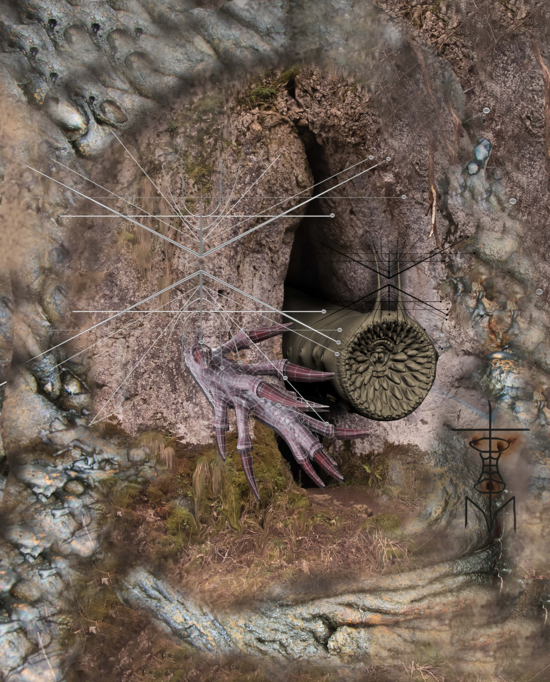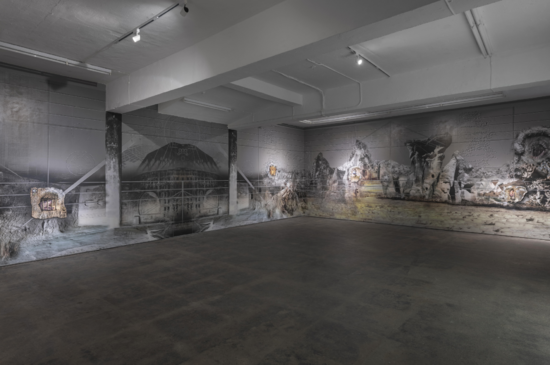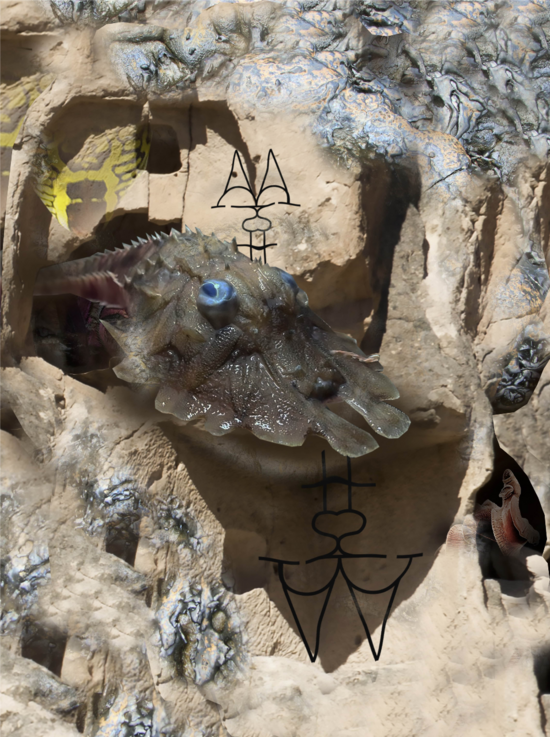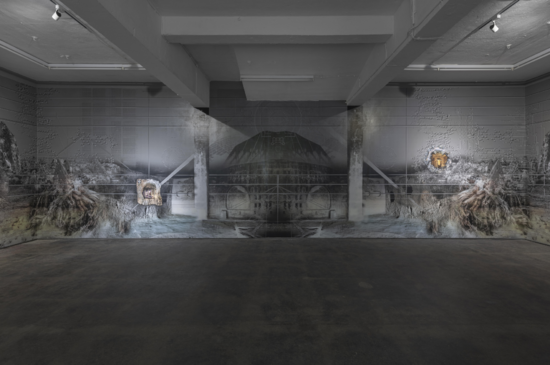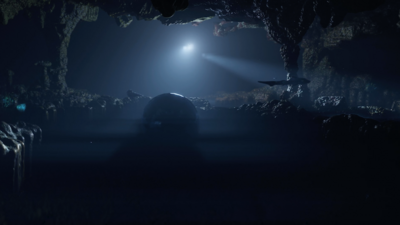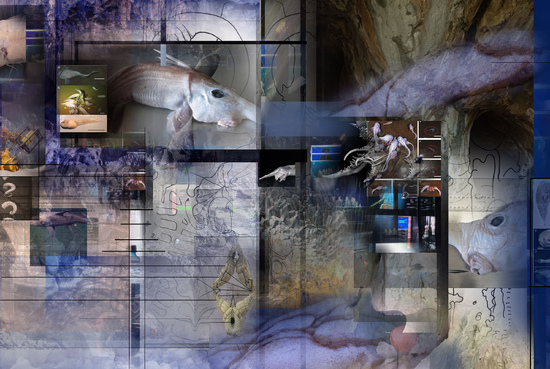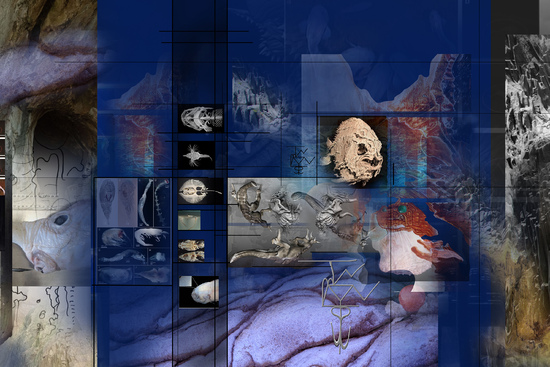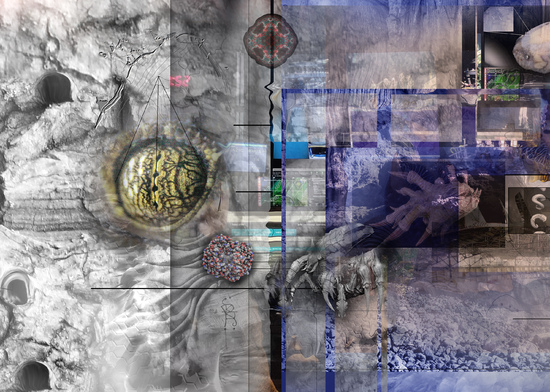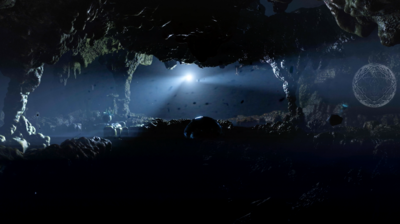by Boris Ondreička
ἄβυσσος (abussos) === bottomless
βένθος (benthos) === depth (of the sea)
---- refers to the lowest surface and subsurface levels (of bodies of water)
“Close your eyes and descend to the deep dark oceanic caves, where bioluminescent fish dwell, and where alien sharks hunt, using their highly developed senses, each one with its special characteristics that allow them to prosper in such a hostile environment. Let your body and soul get crushed by the immense pressure of all the water around you, let yourself drown, and come out as someone who looked death straight in the eye, and realized nothing means anything, and the only reason for you to live is what you make of it.”

There are thousands of diverse or even opposing abysses (down and up, inside and between us). Abyss irritates our curiosity. Curiosity eliminates fear. Curiosity is a base of (extremophilic) creativity. Creativity (and neurosis...) is a fundament of development. This is a clear and direct relation between Eros and Thanatos = der Todestrieb = as already Plotinus writes (in his Enneads): “But it is safer to account for the creative act by nearer connection with the over-world; the souls whose tendency is exercised within the Supreme have a greater power; immune in that pure seat they create securely; for the greater power takes the least hurt from the material within which it operates; and this power remains enduringly attached to the over-world: it creates, therefore it is self-gathered and the created things gather around it; the other souls, on the contrary, themselves go forth; that can only mean that they have deserted (...who/what?) in favour of the abyss; the main phase in them is drawn downwards and pulls them along in the desire towards the lower.”
Deep down there—there is no light, so our eyes lose their sense. But an image can be produced by imagination. Here arts carry a specific competence in terms of seeking (seek, see, sea) the unknown. ‘Deep’ is both a physical, sonic... as well as (non-material) psychic (emotional...) and an intellectual quality. ‘Deep’ relates both to the ‘real’ and ‘unreal’. ‘Deep’ is dark. You have to shine there yourself.
Then there is “‘the abyss of birth.’ An abyss indeed, a gulf into which one does not fall but from which, instead, one emerges into the universal chagrin” of Emil Cioran (The Trouble with Being Born). There is the abyss as “the great yawn or void between the phenomenal world of manifestation and its noumenal source, the gap in thought between the ‘real’ which is ‘ideal’ and the ‘unreal’ which is ‘actual’” of Aleister Crowley (The Book of Lies, self-published, which was exclusively limited for ‘babes of the abyss’ = ‘Adeptus Exemptus’ of his Thelema). There is the o bservation of Karl Kraus’ apocalypse (The last days ofmankind) where “the WWI leading humanity into the abyss through lies, hypocrisy, and propaganda”. There is “a beautiful hotel, equipped with every comfort, on the edge of an abyss, of nothingness, of absurdity. And the daily contemplation of the abyss between excellent meals or artistic entertainment, can only heighten the enjoyment of the subtle comforts offered.” = in Georg Lukács’ critique (‘Grand Hotel Abyss’) of ‘progressive’ intelligentsia (The Theory of Novel).
Let’s follow professor Otto Lidenbrock’s abyss-lessons performed during the reversed mountaineering of him and two other pilgrims: “Science is full of errors, but errors that one should learn about, because, little by little, they lead to the truth.” (after Jules Verne‘s Journey to the Center of the Earth—as it frequently reappears in various contexts of many texts of him, in Twenty thousand Leagues under the Sea as well, as ‘abyssal negativity’—to conquer the space but climbing or diving down as opposed to flying up). The poet and philosopher of the transhumanist climbing theory (and practice) Nicola Masciandaro renamed Nemo to Omen (pNEuMenOn).
Let’s go back to Böhme and Schelling and Hegel‘s (rare) phenomenological anticipation of limitless inwardness, unconsciousness, and intelligence (imagination and the higher forms of thinking) of enigmatic, subjective spirit as “ nightlike abyss within which a world of infinitely numerous images and presentations is preserved without being in consciousness” (in his Phänomenologie des Geistes) and Lacan’s “realm of subjectivity itSELF, the depth of other personality impenetrable”. Let’s retrace “the uncrossable abyss between SELF and the other” (‘domestication and monstrosity’ and Freudian ‘das Ding’) of Emmanuel Levinas; Lyotard‘s “abyss between meaning and existence, which characterizes both nihilism and the sublime, preserves this space better than any attempt to close or bridge it”; “the abyssal point from which the call of ethical responsibility emanates” as commented by Slavoj Žižek or Jon Millis; “the abyss of anxiety / entangled freedom, where freedom is not free in itself” of Søren Kierkegaard; the evil “abyss of non-being” (the cosmological nest of the serpent of sin) of Lev Isaakovich Shestov aka Yeguda Leib Shvartsman (the black-man of the purity of despair); Battaile‘s “...and when one tried to remove flowers, the roses, that cover the abyss, one did so to make visible the manure pit over which (according to a not fully reliable anecdote) Marquis de Sade had scattered the petals of beautiful roses... ...everything noble and beautiful has its roots downfallen to the abyss...”; Merleu-Ponty‘s “...being as abyss and not plenitude...”; Gombrowicz‘s “Normality is a tightrope walker above the abyss of abnormality.”; Rorty‘s “abyss between language and thought”; Ranciere‘s “abyss between speech and classification”; Badiou‘s “diabolic absolute, nothingness—the multiple of the multiple produced by the abyss”; Haraway‘s “the edge of the future before the abyss of unknown”; Whitehead‘s NSA: The Abyss from Which There Is No Return; and for sure the most notorious = Nietzsche‘s ”Whoever fights monsters should see to it that in the process he does not become a monster. And when YOU look long into an abyss, the abyss also looks into YOU.“
There are so many subterranean and aquatic, abyssal fictions: the Hollow Earth hypothesis pseudoscientific myth following Greek realm of Hades, Judaic She-ol, Nordic Svaltarfaheirm, Tibetan Shambhala, Athanasius Kircher‘s Mundus Subterraneus followed by Cellular Cosmogony of Cyrus Reed Teed aka Koresh and Edgar Allan Poe‘s narrative of Arthur Gordon Pym, Edgar Rice Burroughs travelling to the Earth‘s core, Giacomo Casanova‘s utopia of Megamicres’ protocosmos, H. P. Lovecraft‘s traumatic events of Randolph Carter and African amphibian nations of Mami Wata as it have reappeared also in the brutal case of Drexciya (mythos) which gave inspiration to the legendary mission and name of Detroit techno collectives...
A number of authors treatise on those (Atlantis) civilisations as sustaining prehistoricity, asexual or hermaphroditic, pastoral virginity/paradise or hell.
There is a huge effort in Orphic descent to ‘there’ (to ‘archaeo’) in terms of the draconic consumerist lust for mineral and fossil resources and (in opposite) of understanding our recent (and future) climate complexities as in Composing Blue Ecologies: Science, Aesthetics, and the Creatures of the Abyss of Stacy Alaimo, or PaleoBase: Deep Sea Benthic Foraminifera of Anne Holbourn and Andrew S. Henderson.



